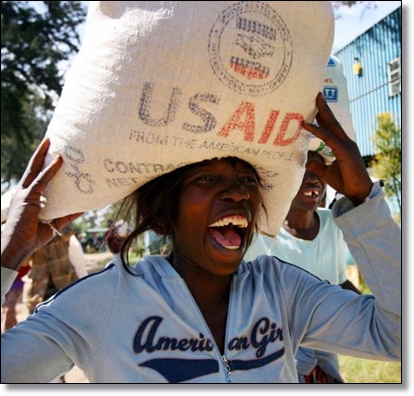Food Security: What Options for Kenya?

 |
| Unsustainable smile? Photo courtesy |
Less than two decades ago, Kenya was a net food exporter, with enough to feed its population and her neighbors. Notably, the country was a case study of good agricultural practices and self sufficiency. Fast forward, today we are a country that is importing most of its food and is struggling to feed its citizens. Two decades of neglect and uncoordinated policies have resulted in severe food shortage and high food price which has the potential of reversing all the gains made in every other sector of the economy.
This situation did not just happen; lack of strategic planning on the part of government and the population’s insistence on certain foodstuffs are to blame. Twenty years ago Kenya’s population was around 25 million; the population today is almost double at slightly over 40 million people. The land under cultivation has remained fairly constant; the government did not put measures to increase acreage under crop or train farmers on ways to improve productivity of the land.
Maize is the staple food in the country, the annual national consumption stands at 38 million bags against a production of 24 million bags. This means we have a deficit of 14 million bags which we have to import. The shortfall in production is highlighted by our farming pattern, 75% of the total maize production in the country is done by small scale farmers, who produce on average 8 bags per acre. The large scale farmers make up the other 25% producing on average 18 bags per acre.
The country’s failure to link production and consumption has led to wastage when there is a bumper harvest and severe food shortage when the rains fail. Farmers do not have the knowledge of proper post harvest handling techniques which has led to cases of contamination of maize and post harvest loses. The poor prices offered to farmers for their harvest has made farming unattractive to youth who prefer moving to the urban centers to look for formal employment, this means the average age of a farmer in Kenya is 58 years.
Intervention
The immediate intervention to guarantee food security would be to make agriculture a sustainable and profitable venture for the farmer. The government should give subsidies to farmers for farm inputs which would lower the cost of production. The farmer should be trained on proper farming methods to increase productivity of their land and on the best post harvest handling techniques to minimize losses. The government should then protect the farmer from cheap imports or ensure the farmers are offered competitive prices for their produce. This would attract the youth to farming and financial institution to funding farmers as the uncertainty in prices is removed.
Kenya should invest more money in irrigation and sinking of boreholes in order to put more land under cultivation. The Kenya Red Cross has shown the viability of irrigation and the use of green house technology. Areas like Ukambani, Takaba and Rhamu in Mandera which were constantly on the organization list of famine hot spots have been transformed into food sufficient regions. In Ukambani, when the organization gave farmers 2 kgs of high quality seeds just before a rainy season; the area was able to harvest at least 20 to 30 bags per homestead. This ensured the residents were fed and taken off food relief by the Red Cross.
In terms of policy, the government should focus on the reforms on land and encourage land consolidation to ensure farming remains viable and the farmers enjoy the benefits of economies of scale. The government should form an umbrella authority like The National Food Security Authority which would cover all areas involved with agriculture such as irrigation, seed production, research and agricultural finance. This would ensure better supervision and coordination of activities between the different bodies.
Lastly, the population needs a cultural reorientation. The continued reliance on maize as the staple food must change. Kenyans should be educated on other alternative sources of starch. These include traditional foodstuffs like cassava, yams and potatoes which are drought resistant and cheap.
Food is the most basic human need. Without the ability to feed its population, the government is unable to meet its primary mandate of protecting the lives of its citizens. The recent development in the country and economic growth will be reversed if the government does not put in place measures to guarantee its citizens of the basic need of food.
By Nicholas Mwangi
Investment Associate
Emerging Africa Capital Ltd
Nairobi- Kenya
Nick@emergingafricacapital.com
